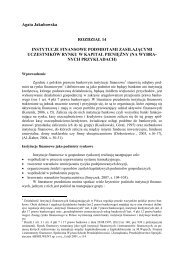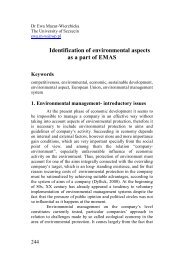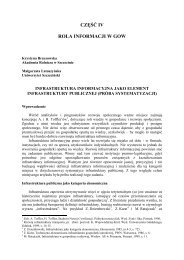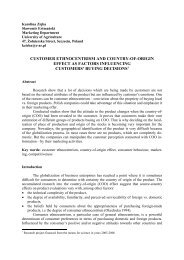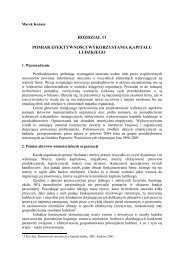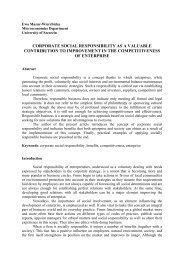Concepts of Strong Comparability and Commensurability versus ...
Concepts of Strong Comparability and Commensurability versus ...
Concepts of Strong Comparability and Commensurability versus ...
You also want an ePaper? Increase the reach of your titles
YUMPU automatically turns print PDFs into web optimized ePapers that Google loves.
The framework, which is presented in schematic form<br />
(Figure 1), has been developed to help underst<strong>and</strong> <strong>and</strong> analyse the<br />
livelihoods <strong>of</strong> the poor. It is also useful in assessing the effectiveness<br />
<strong>of</strong> existing efforts to reduce poverty. Like all frameworks, it is a<br />
simplification; the full diversity <strong>and</strong> richness <strong>of</strong> livelihoods can be<br />
understood only by qualitative <strong>and</strong> participatory analysis at a local<br />
level.<br />
The framework does not attempt to provide an exact<br />
representation <strong>of</strong> reality. It does, however, endeavour to provide a<br />
way <strong>of</strong> thinking about the livelihoods <strong>of</strong> poor people that will<br />
stimulate debate <strong>and</strong> reflection, thereby improving performance in<br />
poverty reduction. In its simplest form, the framework views people<br />
as operating in a context <strong>of</strong> vulnerability. Within this context, they<br />
have access to certain assets or poverty reducing factors. These gain<br />
their meaning <strong>and</strong> value through the prevailing social, institutional<br />
<strong>and</strong> organisational environment. This environment also influences<br />
the livelihood strategies – ways <strong>of</strong> combining <strong>and</strong> using assets – that<br />
are open to people in pursuit <strong>of</strong> beneficial livelihood outcomes that<br />
meet their own livelihood objectives.<br />
The livelihoods approach puts people at the centre <strong>of</strong><br />
development. This focus on people is equally important at higher<br />
levels (when thinking about the achievement <strong>of</strong> objectives such as<br />
poverty reduction, economic reform or sustainable development) as<br />
it is at the micro or community level (where in many cases it is<br />
already well entrenched).<br />
At a practical level, this means that the approach:<br />
• starts with an analysis <strong>of</strong> people’s livelihoods <strong>and</strong> how these<br />
have been changing over time;<br />
• fully involves people <strong>and</strong> respects their views;<br />
• focuses on the impact <strong>of</strong> different policy <strong>and</strong> institutional<br />
arrangements upon people/households <strong>and</strong> upon the dimensions<br />
<strong>of</strong> poverty they define (rather than on resources or overall output<br />
per se);<br />
• stresses the importance <strong>of</strong> influencing these policies <strong>and</strong><br />
institutional arrangements so they promote the agenda <strong>of</strong> the<br />
poor (a key step is political participation by poor people<br />
themselves);<br />
96



